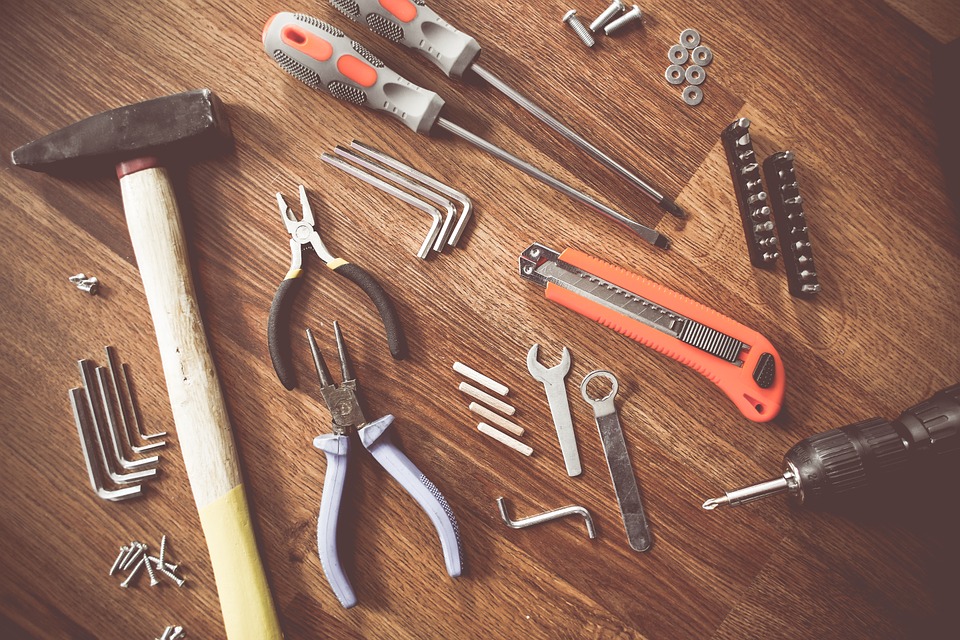Woodworking is a great way to unwind and relax. You can channel your creativity into your project and create a beautiful sculpture or piece of furniture in the process. With all the right tools and materials, you can build anything you set your mind to.
If you’re new to the world of woodworking, you’ll need a few essential tools in your trusted toolbox to get you started. However, with so many different types of saws, sanders, and screws, it’s easy to get muddled up. To make this easier, we’ve compiled a list of our top ten must-have woodworking tools.
Hammer
A hammer is one of the first tools any woodworker purchases. It’s even an item that can already be found in many people’s homes. There are dozens of hammers with varying uses but if you’re just a beginner, we recommend purchasing a carpenter’s claw hammer. You can use these to assemble furniture, bend metal, pull nails, and do general carpentry. Bear in mind that the heavier the hammer, the greater the force it will exert.
Features to consider:
- Head design
- Handle composition
- Overall weight
Power Drill
Whether you’re hanging up a picture frame, mixing a can of fresh paint, or embarking on your very first woodworking project, you’ll need a great power drill to help you along the way. One of the main things you should consider before making your purchase is whether you want a cordless or corded model. The latter tends to be cheaper and more powerful however a wireless power drill offers more convenience and flexibility. The best thing about a power drill is that you can purchase different attachments to turn them into countless other tools.
Features to consider:
- Voltage rating
- Cord or cordless model
- Safety rating
Marking Gauge
A marking gauge is one of the oldest tools in the box. It’s been used for centuries and it’s one of the foundations that makes a great project. Also known as a scratch gauge, a marking gauge is used for marking out lines and creating clean cuts. You’ll reach for this tool when making rabbet joints, dovetail joints, thicknessing joints and many more. For beginners, we recommend purchasing a premium combination gauge, rather than a mortise gauge or standard marking gauge.
Features to consider:
- Pin or disc gauge
- Removable cutter
- Gauge material
Hand Saw
Handsaws are great tools because they can be used when detailed or precise cuts are required. Unlike bulky powered saws, these manual versions will give you a lot of room to manoeuvre with and you’ll never have to pause your project if the battery dies. Japanese pull saws are a favourite amongst beginners as the blades are incredibly versatile and cheap to replace. More saw trivia you should know is that ripping saws are used to cut with the wood grain whilst crosscut saws are used to cut across the wood grain.
Features to consider:
- Saw Grip
- Blade protection
- Thickness of the blade
Orbital Sander
If you’re looking for a tool that will give your woodworking projects a smooth and professional finish, you should invest in an orbital sander. These devices use circular sandpaper pads to sand down your wood in recording timing. Sanding is an incredibly tedious part of the woodworking process; however, a well-sanded piece of wood makes all the difference. This tool may seem like a stretch for beginners, but a silky and luxurious finish will elevate your work to the next level.
Features to consider:
- Body configuration
- Pad size
- Motor size
Mallet
Although a mallet may look and feel similar to a hammer, it’s important that you understand the differences between the two. Both of these can be used to strike, however, mallets have wooden or leather heads that can be detached to fit an array of sizes. As mallets are much softer than hammers, they can also absorb the shock that they deliver, which makes them perfect for positioning joints during assembly or smashing chisels into hardwood. Mallets should always be used to tap chisels because steel hammers could leave rough stab marks on the wood.
Features to consider:
- Comfortable handle
- Rubber, wooden, or nylon head
- Weight of head
Chisel Set
If a mallet is an indispensable tool, then so are the chisels that accompany it. These are an important addition to your toolbox, but the wrong kind can turn any blissful experience into a nightmare. Make sure to buy a set of high-quality chisels, learn how to use them and how to sharpen them accordingly. When you invest in great equipment and learn to take care of it, the quality of your work will drastically improve. You can use chisels for carving, shaping, pairing, and joinery.
Feature to consider:
- Hardened and tempered blades
- Bolsters and ferrules
- Type of steel
Clamps
Clamps are a must-have necessity for anyone dipping their toes in the woodworking world. At first, it can be incredibly difficult to hold your work, assemble the panels, and glue pieces together, which is when a set of clamps will come in handy. Even the most veteran and experienced woodworker can tell you how vital these are. Clamps come in all sorts of shapes and sizes, with the three most common being bar clamps, strap clamps, and pipe clamps.
Features to consider:
- What type of wood is being used
- The amount of clamping force required
- The purpose the clamps are serving
Router
Routers are flat power tools used for creating cut-outs, sharp edges, decorative surface cuts, and much more. It’s slightly more demanding than your average circular saw but once you get a hang of this tool it will be one of your most-used devices. You can use this handy tool for rounding table edges, cutting sliding dovetails, and cutting inlays. These tools can be sensitive to breaking so we recommend that you purchase a brand-new model.
Features to consider:
- Motor speed
- Base aperture
- Plunge depth
Dust Collector
A dust collector may not be the most exciting tool in the box, but it will save you a lot of hassle when cleaning up your shop. A clean and tidy workshop will lead to a lengthy and productive session. Your woodworking tools will also function to the best of their ability if there’s no dust lying around. Not only this but large amounts of sawdust can be extremely detrimental to your lungs and overall health.
Features to consider:
- Airflow velocity
- Static pressure
- Large particle dust control
Having all the right tools and equipment on your woodworking station is of no use if you don’t handle it with care. It’s important that you read all instruction manuals carefully and that you always wear protective equipment, such as footwear and goggles. To protect your lungs, you should always wear a dust mask or respirator, and, to avoid a nasty accident, ensure that your workstation has great lighting. Finally, make sure you are free of distractions and completely focused on the task at hand. Remember if in doubt, there is no doubt. Seek professional advice if you are unsure about any aspect.









